March 19 to March 25
While Chiang Kai-shek (蔣介石) ran unopposed for his last three presidential elections in 1960, 1966 and 1972, he actually had a challenger in his first election in Taiwan.
On March 22, 1954, 75-year-old Hsu Fu-lin (徐傅霖) of the China Democratic Socialist Party (中國民主社會黨) became the last person to challenge a Chinese Nationalist Party (KMT) presidential candidate for the next four decades. Chiang’s successors, his son Chiang Ching-kuo (蔣經國) and later Lee Teng-hui (李登輝), continued the practice of running uncontested.
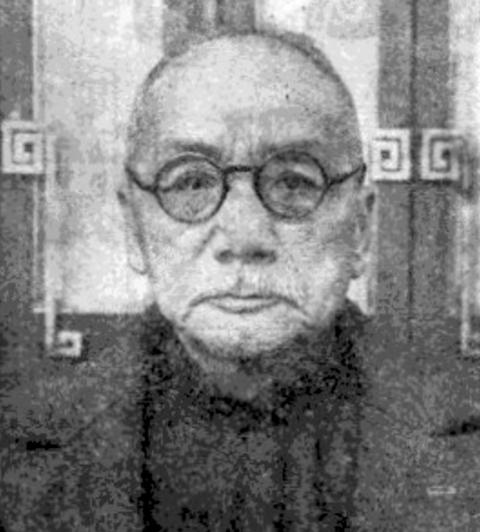
Photo courtesy of Wikimedia Commons
Taiwan did not have direct presidential elections back then; the nation’s leader was chosen every six years by the National Assembly. The problem was that this assembly’s members were supposed to be elected directly by the people — but elections had been suspended since 1947 and the same members would remain in place until 1991.
On that day, 1,573 National Assembly members gathered at Taipei’s Zhongshan Hall. It was a strange election as just over half of the 3,045 members were present; the others either did not make it to Taiwan after the KMT retreat or were absent for other reasons. The votes were cast — but because less than half the members validated the result, the assembly had to vote a second time. Chiang obliterated Hsu, 1,507 to 48.
‘EXAMPLE FOR DEMOCRACY’
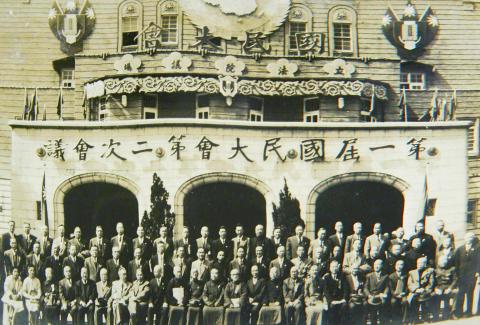
Photo: Hung Mei-hsiu, Taipei Times
This wasn’t the first time Hsu ran against the KMT. Six years prior, at the former KMT headquarters of Nanjing, Hsu finished dead last in the election for vice president.
While the KMT banned the formation of new political parties during the Martial Law era from 1949 to 1987, there were two legal parties who retreated from China to Taiwan alongside the KMT — in addition to Hsu’s party, there was also the Young China Party (中國青年黨). Both were allowed to participate in the first National Assembly elections in 1947.
Power was heavily skewed in favor of the KMT from the very beginning. During the first National Assembly elections in 1947, the KMT nominated more than 2,000 candidates while the Young China party and Democratic Socialist Party both fielded fewer than 400 each.
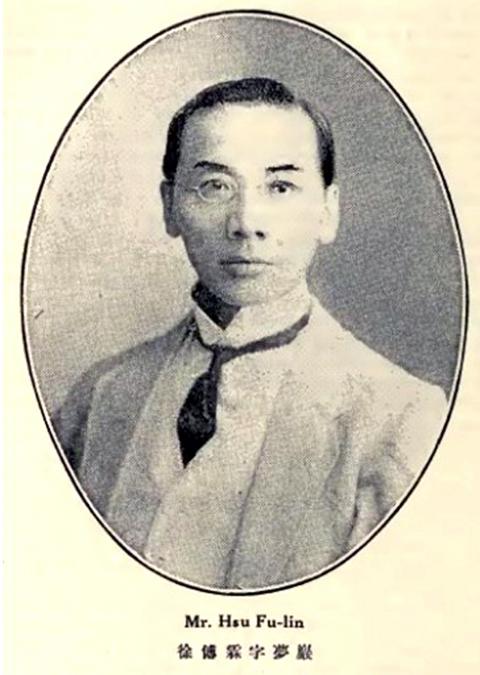
Photo courtesy of Wikimedia Commons
The KMT dominated the polls, with the other two parties winning less than 80 seats each. Both parties threatened to leave the government in protest, and the KMT ended up forcing some of its members to concede their seats in a controversial move that led to much internal discontent. But the assembly was still heavily dominated by KMT members, rendering the “opposition” as not much of an opposition.
“The KMT altered the election structure in 1954 and also strengthened its under-the-table negotiations so it could further control the elections,” historian Wang Yu-feng (王御風) writes in the book, History of Elections in Taiwan (台灣選舉史).
In fact, a short biography published to commemorate Hsu’s death in 1958 acknowledges the futility of challenging the KMT, stating, “When he ran for vice president and president, he knew that it was an impossible feat but he still pushed through, just to set an example for the nation’s democracy.”
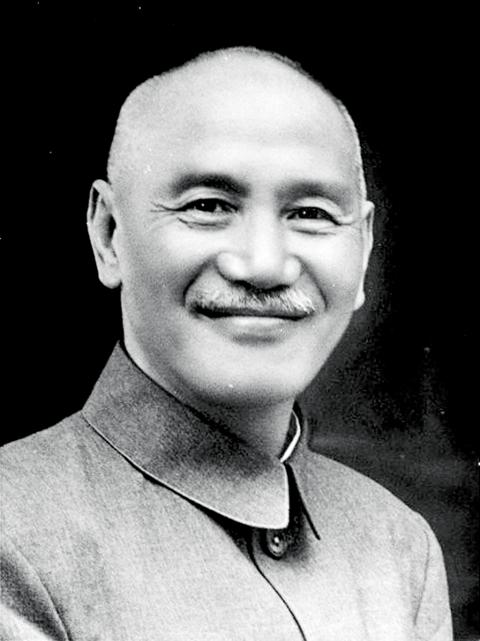
Photo courtesy of Wikimedia Commons
TOTALITARIAN RULE
Chiang was not supposed to run again for president in 1960 due to constitutional term limits. Chiang claimed that he was against amending the constitution to keep him in power, and instead the National Assembly amended the Temporary Provisions Effective During the Period of National Mobilization for Suppression of the Communist Rebellion (動員戡亂時期臨時條款), which allowed him to run for infinite terms as long as the Temporary Provisions were still in place.
With nobody opposing Chiang and the threshold of National Assembly members required to validate the vote lowered, this move solidified the party’s iron grip over Taiwan.
“Our compatriots across the world have requested in unison that President Chiang run for another term,” announced election chairman Chia Ching-teh (賈景德) to about 50,000 people gathered in front of Zhongshan Hall. “To respect popular opinion, the National Assembly has amended the [Temporary Provisions] so he can continue to serve as president. Judging from how jubilant you all are today, I believe that our compatriots overseas will feel the same. Especially our compatriots on the mainland who are suffering, they must be even more overjoyed to hear this news.”
“Now, chant loudly with me: Long live the Republic of China! Long live the Three Principles of the People! Long live President Chiang!”
Of course this did not sit well with many non-KMT politicians, including Lei Chen (雷震), a former KMT official who was expelled in 1954 for criticizing the party in his publication, Free China (自由中國).
A few months after Chiang was re-elected, Lei and leaders from both the China Democratic Socialist Party and the China Youth Party as well as a number of independent politicians of both Chinese and Taiwanese origin gathered at the Democratic Socialist Party headquarters to discuss how to counterbalance the KMT’s increasingly authoritarian rule.
They decided to form the a new party called the China Democracy Party (中國民主黨), and immediately began preparations.
The KMT watched carefully, but it seems that an Free China article comparing the formation of opposition parties to the Yangtze River flowing east — something that cannot be stopped — was the last straw. Three days after the article ran, Lei and three others were arrested for spreading communist propaganda and harboring communists — standard excuses for political arrests during the Martial Law era.
Chiang personally made sure that Lei would spend at least 10 years in jail with no possiblity of appeal. When a KMT politician spoke out against the verdict, his party membership was suspended for one year.
“Naturally, after the Lei Chen incident, nobody would dare to oppose Chiang when he announced that he would run for yet another term, and he easily won again in 1966,” Wang writes.
All hopes were dashed for the KMT to propagate real democracy after that. The party would reluctantly do so several decades later under the pressure of Taiwan’s democracy movement, but that’s a story for another time.
Taiwan in Time, a column about Taiwan’s history that is published every Sunday, spotlights important or interesting events around the nation that have anniversaries this week.
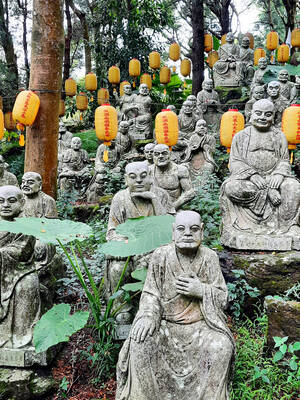
When Taiwan was battered by storms this summer, the only crumb of comfort I could take was knowing that some advice I’d drafted several weeks earlier had been correct. Regarding the Southern Cross-Island Highway (南橫公路), a spectacular high-elevation route connecting Taiwan’s southwest with the country’s southeast, I’d written: “The precarious existence of this road cannot be overstated; those hoping to drive or ride all the way across should have a backup plan.” As this article was going to press, the middle section of the highway, between Meishankou (梅山口) in Kaohsiung and Siangyang (向陽) in Taitung County, was still closed to outsiders

President William Lai (賴清德) has championed Taiwan as an “AI Island” — an artificial intelligence (AI) hub powering the global tech economy. But without major shifts in talent, funding and strategic direction, this vision risks becoming a static fortress: indispensable, yet immobile and vulnerable. It’s time to reframe Taiwan’s ambition. Time to move from a resource-rich AI island to an AI Armada. Why change metaphors? Because choosing the right metaphor shapes both understanding and strategy. The “AI Island” frames our national ambition as a static fortress that, while valuable, is still vulnerable and reactive. Shifting our metaphor to an “AI Armada”
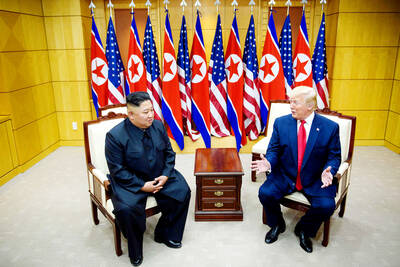
US President Donald Trump may have hoped for an impromptu talk with his old friend Kim Jong-un during a recent trip to Asia, but analysts say the increasingly emboldened North Korean despot had few good reasons to join the photo-op. Trump sent repeated overtures to Kim during his barnstorming tour of Asia, saying he was “100 percent” open to a meeting and even bucking decades of US policy by conceding that North Korea was “sort of a nuclear power.” But Pyongyang kept mum on the invitation, instead firing off missiles and sending its foreign minister to Russia and Belarus, with whom it
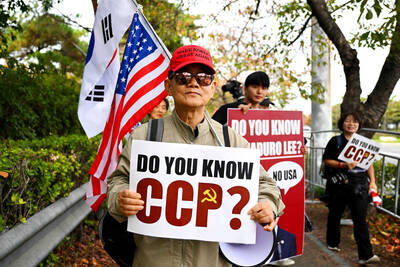
The Chinese Communist Party (CCP) has a dystopian, radical and dangerous conception of itself. Few are aware of this very fundamental difference between how they view power and how the rest of the world does. Even those of us who have lived in China sometimes fall back into the trap of viewing it through the lens of the power relationships common throughout the rest of the world, instead of understanding the CCP as it conceives of itself. Broadly speaking, the concepts of the people, race, culture, civilization, nation, government and religion are separate, though often overlapping and intertwined. A government